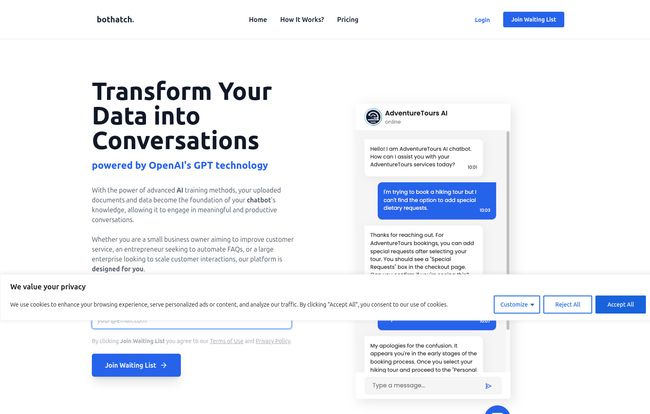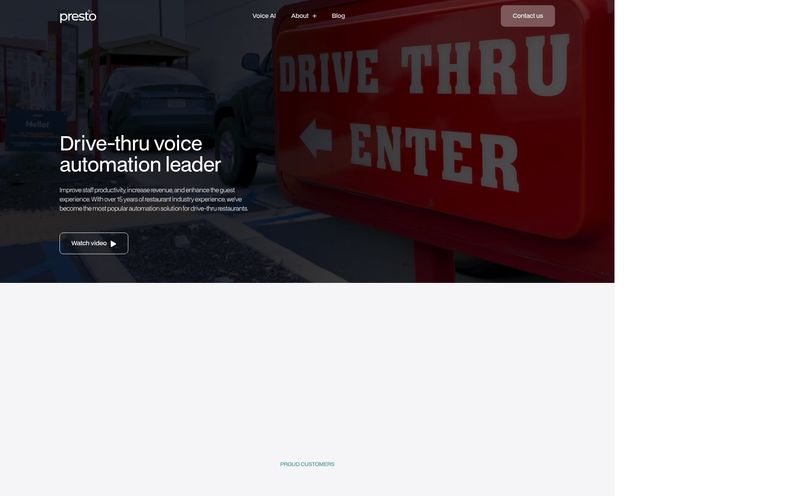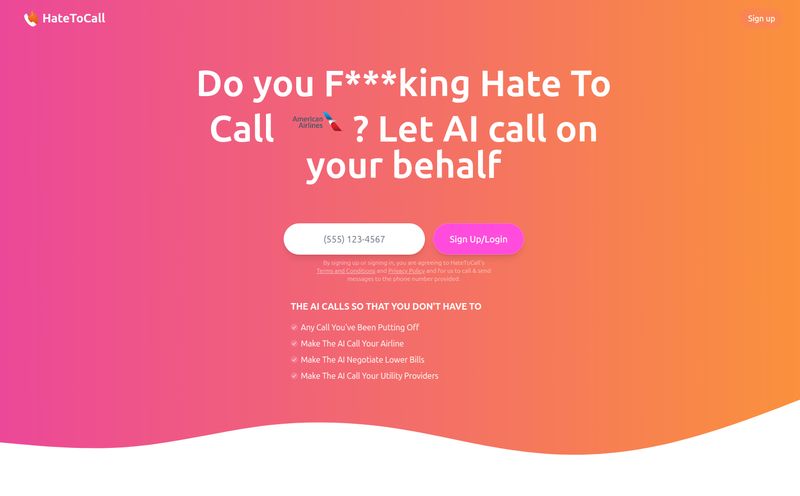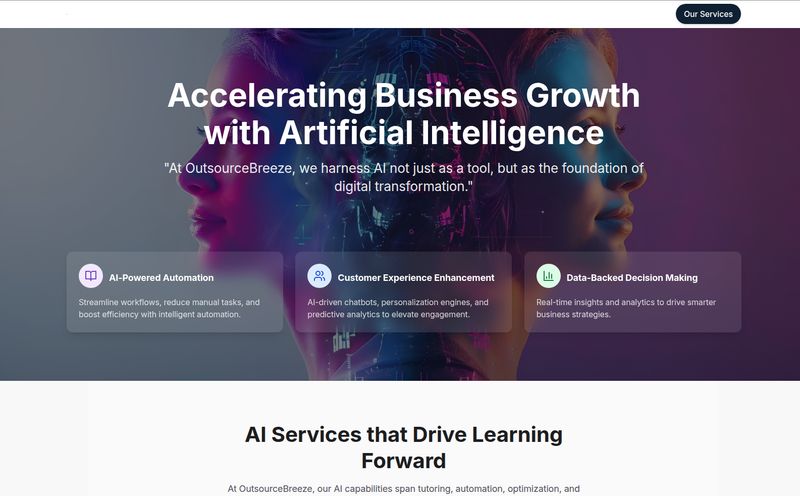For the past couple of years, the digital marketing world has been absolutely buzzing—okay, maybe screaming—about AI. Specifically, conversational AI. Everyone, and I mean everyone, from the corner coffee shop to the Fortune 500 giant wants a slick chatbot on their site. Why? Because it promises a world where customer support is instant, leads are qualified 24/7, and your website visitors feel truly heard.
But there’s always been a catch, hasn't there? A big, fat, technical catch. You either needed a developer who speaks fluent Python, a bottomless budget for an enterprise solution, or the patience of a saint to wrestle with clunky, old-school bot builders that felt more like building with broken LEGOs. I've been there. I remember trying to set up a bot for a client back in 2019 and it was a week-long headache of flowcharts and 'if-then' statements that still ended up sounding like a robot with a thesaurus.
So when I stumbled upon a platform called BotHatch, my inner SEO-and-traffic-nerd sat up a little straighter. The promise? Transform your own data into conversations, powered by OpenAI's GPT technology. No coding. Simple. Fast. Could this be it? The tool that finally democratizes custom AI for the rest of us? I had to find out.
What Exactly is BotHatch? (And Why Should You Care?)
At its heart, BotHatch is a SaaS (Software as a Service) platform that does one thing, but it aims to do it incredibly well. It lets you create a custom chatbot by feeding it your own information. Think of it like this: you're not getting a generic, off-the-shelf bot that only knows how to say "Hello, how can I help you?". Instead, you're building a digital employee and giving it your company's brain.
You can upload your internal knowledge base, product manuals, blog archives, customer service transcripts, FAQs... basically any text-based document that defines your business. BotHatch then uses that material as the chatbot's single source of truth. The result is a bot that can answer specific questions about your products, your policies, and your brand voice. It's a game-changer for scaling personalized customer interactions.

Visit Bothatch
The 3-Step "Magic" of Building Your Bot
The BotHatch website lays out a simple three-step process, which I appreciate. There's no jargon, no overly technical diagrams. It's designed to get you from zero to chatbot hero in minutes.
Step 1: Register and Go
This is exactly what it sounds like. You sign up. There’s no complex setup or configuration panel that looks like the cockpit of a 747. The platform champions a no-code approach, and they mean it. You don't need to know what an API endpoint is or how to write a single line of JavaScript to get started.
Step 2: Feed the Beast (Your Data, That Is)
This is where the magic really happens. You start uploading your documents. For an e-commerce store, this might be product descriptions and return policies. For a SaaS company, it could be technical documentation and user guides. For a content creator like myself, I could feed it all my old blog posts, and suddenly, I'd have a bot that could help readers find articles on specific SEO topics. Your data becomes its knowledge, its personality.
Step 3: Unleash and Integrate
Once your bot is trained, it's ready for action. You can chat with it directly on the BotHatch platform to test it out. But the real power comes from putting it to work. The platform allows you to integrate your new AI assistant directly into your website, your WordPress blog, your Shopify store, and even internal communication tools like Slack. This is how you move from a cool tech demo to a genuine business asset that works around the clock.
Let's Talk Brass Tacks: BotHatch Pricing
Alright, this is where the rubber meets the road for most small businesses and entrepreneurs. A tool can be amazing, but if the price is wrong, it's a non-starter. BotHatch has a straightforward, per-instance pricing model that seems pretty reasonable at first glance.
| Plan | Price | Best For |
|---|---|---|
| Free Bot | $0 | Just testing the waters. Very limited, but good for a proof of concept. |
| Team Bot | $30 /mo | Internal use. A private knowledge base for your team or project. |
| Business Bot | $50 /mo | Public-facing chatbots for your website, customer service, and lead gen. |
The Free Bot is a test drive, not a daily driver. With limits of 10 documents and 50 messages a month, you'll hit the ceiling fast. But it's perfect for seeing if the platform works for you without pulling out your credit card.
The Team Bot at $30/mo is interesting. It's positioned as an internal knowledge expert. Think of a bot your team can query on Slack about company procedures instead of bothering HR. One small point of confusion: the pricing grid on their site shows this plan doesn't include integrations, but other info I've seen suggests it might. Something to clarify if you're signing up for this specific tier.
The Business Bot at $50/mo is clearly the main event. This is the plan for anyone who wants a public, customer-facing chatbot. It gives you a custom URL, website integrations, and a higher message and data allowance. For most businesses, this will be the one.
The Good, The Bad, and The GPT-Dependent
No tool is perfect. After poking around, here’s my honest breakdown of where BotHatch shines and where it has room to grow.
What I Really Liked
The simplicity is its greatest strength. The no-code promise is real, and it opens up powerful technology to non-technical users. Building on OpenAI's GPT models is also a smart move. You're getting state-of-the-art language capabilities without BotHatch having to reinvent the wheel. And the ability to create personalized, automated conversations at scale is the holy grail for improving user engagement and, ultimately, conversion rates.
Where It Could Be Better
The limitations on the free plan are pretty tight, so you'll have to upgrade to do any real work. The data limits, even on the paid plans (100 MB for Business), might be a constraint for very large companies with massive document libraries. My biggest hesitation, and this applies to many AI tools right now, is teh reliance on a third party like OpenAI. It’s a double-edged sword. You get amazing tech, but if OpenAI has an outage or changes its API terms, your bot could be affected. It's just something to be aware of—you're building your house on rented land, so to speak.
My Final Take: Who is BotHatch Actually For?
So, what's the verdict? I'm genuinely optimistic about BotHatch. It's not trying to be an all-in-one AI platform that solves world hunger. It's a focused tool that solves a very real problem for a specific audience.
This is perfect for:
- Small to medium-sized businesses that need to level up their customer support without hiring a dev team.
- Solopreneurs and marketers who want to turn their content library into an interactive lead-generation machine.
- Teams that need a quick, searchable knowledge base for internal questions.
Who is it not for? Probably massive enterprises that need highly customized, on-premise solutions with petabytes of data. But let’s be honest, those companies have their own in-house teams for that stuff anyway.
The fact that they have a "Join Waiting List" button on the site also tells me this is a new and evolving product, which is exciting. Getting in early often has its perks.
Conclusion
In a sea of AI hype, BotHatch feels refreshingly practical. It takes the incredibly complex world of large language models and boils it down to a simple, three-step process. It's about turning your most valuable asset—your institutional knowledge—into a dynamic, conversational tool that can boost traffic, improve user experience, and free up your time.
It’s not perfect, but it represents a massive step in the right direction. The future of the web is interactive, and tools like BotHatch are handing the keys to creators and businesses who were previously locked out. And for that, I'm pretty excited to see how it grows.
Frequently Asked Questions
- Do I need to know how to code to use BotHatch?
- Absolutely not. One of its main features is that it's a completely no-code platform. If you can upload a document, you can build a chatbot.
- What kind of data can I train my BotHatch chatbot on?
- You can train it on most text-based data, including documents (like .pdf, .doc, .txt), website content, product manuals, and FAQs. The more relevant data you provide, the smarter your bot will be.
- Is BotHatch using its own AI or something else?
- BotHatch is powered by OpenAI's GPT technology, which is one of the most advanced language models available today. This means you benefit from its powerful conversational abilities.
- Can I put the chatbot directly on my WordPress site?
- Yes, the Business plan ($50/mo) includes integrations that allow you to embed the chatbot on your website, including WordPress, Shopify, and others through custom code.
- Is there a free trial?
- Yes, there is a Free plan available. It has significant limitations on usage but is a great way to test the platform's core functionality before committing to a paid plan.
- What happens if I go over my monthly message limit?
- According to their pricing page, the paid plans (Team and Business) offer a pay-as-you-go option for any messages that exceed your monthly allowance, so your service won't be interrupted.



